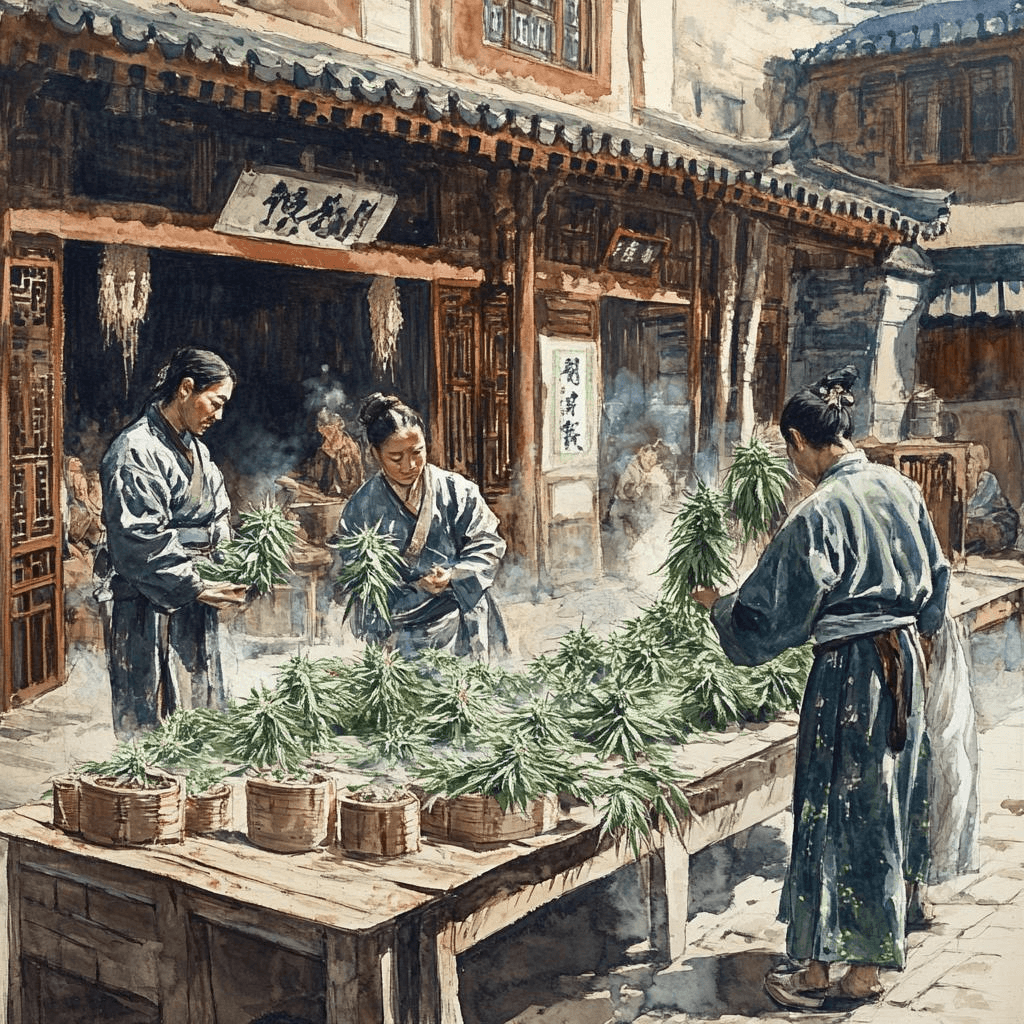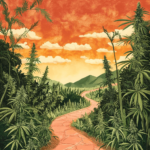Throughout history, numerous plants have played pivotal roles in shaping human civilization. Among these, hemp, a variety of the cannabis sativa plant, stands out for its remarkable versatility and profound impact on the textile industry. From ancient China to colonial America, hemp fibers served as the foundation for clothing, sails, ropes, and even paper, leaving an indelible mark on the fabric of human society.
The Strength and Durability of Hemp Fibers
Hemp fibers possess exceptional strength and durability, making them ideal for crafting long-lasting fabrics. This characteristic was particularly valuable in the past, when resources were limited, and textiles needed to withstand the rigors of everyday life. Unlike other natural fibers, such as linen, which tend to weaken over time, hemp retains its strength and integrity for extended periods, making it a reliable choice for clothing, sails, and other demanding applications.
Hemp’s Adaptability and Diverse Applications
The versatility of hemp fibers is another key factor contributing to its historical significance in the cloth industry. Unlike many other plants, hemp can be woven into a wide range of textiles, from coarse canvas and rope to fine linens. This adaptability allowed for its use in a diverse array of applications, catering to various needs and preferences. For instance, the coarse and sturdy fibers were perfect for crafting sails and ropes, essential for maritime navigation and trade. Meanwhile, the finer hemp fibers were utilized in the production of clothing, tablecloths, and other household items, valued for their comfort and durability.
Hemp Cultivation: A Sustainable and Environmentally Friendly Practice
Hemp cultivation boasts numerous environmental advantages, making it a sustainable and eco-friendly choice for textile production. Unlike cotton, which requires significant amounts of water and pesticides, hemp thrives in diverse climates with minimal water requirements and thrives without the need for harmful chemicals. Additionally, hemp grows rapidly, reaching maturity in a matter of months, and its dense foliage helps suppress weeds and prevent soil erosion. These factors contribute to hemp’s positive impact on the environment, making it a more sustainable and responsible alternative to conventional textile crops.
A Historical Perspective: Hemp’s Role in Different Civilizations
Ancient China: Evidence suggests that hemp cultivation and utilization date back thousands of years in China, where it was employed for various purposes, including clothing, ropes, and paper. Archaeological discoveries have unearthed hemp textiles dating back to the Neolithic period, highlighting its early significance in Chinese society.
Medieval Europe: During the Middle Ages, hemp became a staple crop in Europe, providing essential fibers for sails, ropes, and clothing. Its strength and durability made it particularly suitable for maritime applications, contributing to the development of European naval power and exploration.
Colonial America: Early American colonists heavily relied on hemp for textile production. In fact, farmers were even mandated by law to cultivate hemp at certain times, underscoring its vital role in the colonial economy. Hemp fibers were utilized in the production of clothing, sails, ropes, and other essential items, supporting the growth and development of the American colonies.
The Decline and Resurgence of Hemp
The 20th century witnessed a significant decline in hemp production due to the rise of synthetic fibers and the implementation of cannabis prohibition laws. Synthetic fibers, such as nylon and polyester, were perceived as more affordable and convenient, leading to a gradual shift away from natural fibers like hemp. Additionally, the prohibition of cannabis, fueled by misinformation and racial prejudice, further hampered hemp cultivation and its use in the textile industry.
The Future of Hemp in the Cloth Industry
In recent years, there has been a growing interest in hemp as a sustainable and eco-friendly alternative to conventional textile materials. With increasing awareness of environmental concerns and the demand for responsible practices, hemp is experiencing a renaissance in the cloth industry. Modern advancements in processing and production techniques have made hemp fabrics more affordable and accessible, paving the way for its wider adoption in the fashion and textile sectors.
The Enduring Legacy of Hemp
Hemp’s legacy extends far beyond its historical significance in the cloth industry. This versatile plant has served as a source of food, medicine, and industrial materials for millennia, contributing to the development of human civilization in countless ways. As we move towards a more sustainable future, hemp’s potential as a renewable and eco-friendly resource is being increasingly recognized, ensuring its continued relevance in the years to come.
Conclusion
In conclusion, hemp has played a pivotal role in shaping the cloth industries of old, leaving an indelible mark on human history. Its exceptional strength, durability, versatility, and sustainable cultivation practices made it an indispensable resource for various civilizations throughout time. While the 20th century saw a decline in its use due to various factors, hemp is experiencing a well-deserved resurgence in the modern era, driven by growing environmental concerns and the demand for sustainable practices. As we strive towards a more responsible and eco-friendly future, hemp’s potential as a versatile and sustainable resource is poised to play an even greater role in the cloth industries of tomorrow.


